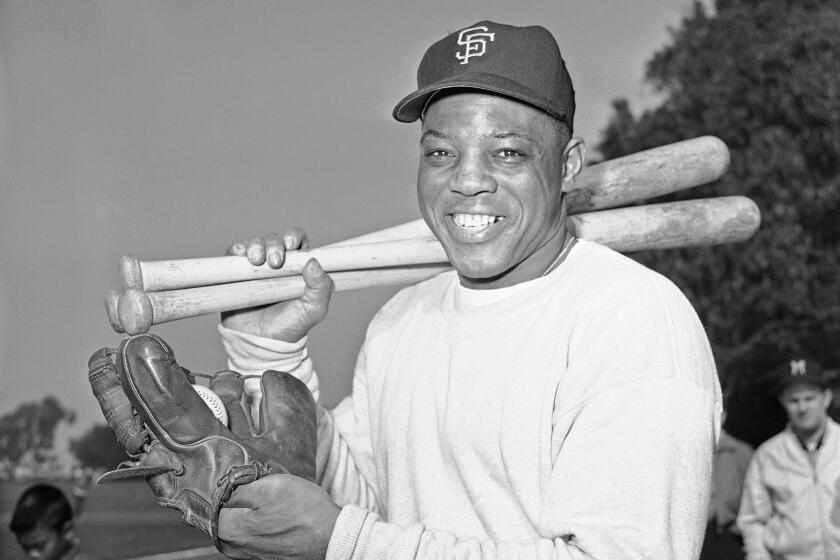Ornaments Aren’t Just Collecting Dust
Christmas is collectible. Old ornaments, lights, tree stands, candy containers, even old aluminum trees are in demand.
Some of the most expensive ornaments collected today are known as Dresdens. They were made of embossed or flat paper between 1880 and 1910 in Dresden, Germany.
The earliest Dresdens were made in the shapes of animals, musical instruments and churches. A few Santas were also made. The silver or gold paper generally was decorated with a couple of bright colors, usually red and green.
Each ornament was made of two pieces of embossed paper glued together, and the ornaments were the same on each side. The embossing gave the ornament a three-dimensional look.
Dresdens also were used as table decorations and as candy containers.
Although Santa or Father Christmas figures were rare, some large figures were used as store decorations and window displays. Most of the pressed-cardboard figures have a fold-out stand in back.
Question: I have an orange-crate label that has a picture of the three wise men and the words “Merry Xmas.” I was told it was used in the 1930s, but I thought they first started using the abbreviation “Xmas” for Christmas in the 1950s.
Answer: The word “Xmas” was used as early as 1551. Beginning in the 19th century, it appeared in advertisements and on trade cards, postcards and greeting cards.
In the 1960s a movement began to stop using “Xmas” because it was considered “taking Christ out of Christmas.”
In fact, “Xmas” evolved from “XP”--the Greek letters chi and rho --which was an abbreviation of the Greek symbol for Christ. “Xmas” is no less religious than “Christmas.”
The Xmas orange-crate label is well-known. It was made in the 1930s.
Q: My parents bought a blown-glass tree ornament for my first Christmas, in 1929. It’s a 5 1/4-inch dirigible shaped like a cigar. The silvered glass has an American flag painted on one side and the words “Graf Zeppelin” on the other. There’s a spun-glass tail on one end. What is my ornament worth?
A: From about 1900 until the Hindenburg disaster in 1937, dirigibles were the craze in transportation. Their popularity was reflected in Christmas ornaments.
In 1928, the Germans completed the Graf Zeppelin, which made 590 flights before it was decommissioned in 1937. It made history in 1929 by flying around the world.
The most valuable dirigible ornaments are molded, not free-blown such as yours. Your ornament is worth about $100.
Q: Last year’s Christmas catalog from FAO Schwarz featured a “European hand-carved rocking horse” made by Stevenson Bros. of England. It was made of wood with no cover and with a horsehair mane and leather saddle.
About 10 years ago, I bought a horse that looks a lot like it from an antiques dealer who said FAO Schwarz had sold it around the turn of the century. My horse has a horsehide cover and no marks. Can you tell me anything about the two horses?
A: Your horse and the one offered last year by FAO Schwarz are called “swing-stand horses.” The style was invented in 1878 by Philip Marqua of Cincinnati. The horse moves back and forth on a stand, eliminating noise, carpet wear and tipping.
Stevenson Bros., founded in 1982, makes reproductions of Victorian rocking horses.
Your horse is probably American-made but modeled after German imports, which were generally skin- or fabric-covered. It could have been made by one of several manufacturers.
At the turn of the century, the Morton E. Converse Toy Co. of Winchendon, Mass., was one of the largest manufacturers of rocking horses.
Q: I have a sterling “pitcher.” There is a cork in the lid and a strainer in the spout. My friends say it is a cocktail shaker. How was it used?
A: Your shaker held the ingredients for a cocktail--liquor, mixer and ice. You put the ingredients in the shaker, cork it and shake the mixture vigorously. The drink then would be poured through the strainer spout.
The earliest printed reference to a mixed-drink cocktail in the United States appeared in 1806. The martini was invented in 1860.
Most old cocktail shakers seen today date from the 1920s and ‘30s. The cocktail was so popular in those years that the shaker has become one of the symbols of Art Deco design.
Drinks that call for a cocktail shaker have enjoyed renewed popularity in recent years. You can buy new cocktail shakers at kitchenware stores.
If you’d like a listing of helpful books and publications on antiques, send a self-addressed, stamped (55 cents) envelope to the Kovels, Los Angeles Times, King Features Syndicate, 235 E. 45th St., New York, NY 10017.
(BEGIN TEXT OF INFOBOX / INFOGRAPHIC)
Current Price
Current prices are recorded from antiques shows, flea markets, sales and auctions throughout the United States. Prices vary by location because of local economic conditions.
* Flash Gordon Noma Christmas bulb shades, colored plastic, three designs, 1930s, 1 1/2 by 1 1/2 inches, set of six: $60.
* Santa Claus decanter and six matching mugs, Lefton: $70.
* Man in the moon Christmas tree ornament, crescent form, circa 1930, 4 inches: $80.
* Serving tray, Betty Boop as Santa Claus carrying sack containing Donald Duck toy, tin, 1950s, 6 1/4 inches by 3/4-inch deep: $85.
* Lionel train, No. 6-18403, with Mr. and Mrs. Santa Claus in handcar: $90.
* Black velvet yarmulke with silver threading, 1890s: $125.
* Kneeling stool, floral upholstery, turned mahogany legs, paper label that reads, “Commonwealth of Pennsylvania Department of Labor,” 28 by 12 by 10 inches: $275.
* EffanBee walker doll, Honey, hard plastic, with trunk, rabbit-fur coat and muff, 1949, 14 inches: $435.
* Royal Doulton figurine, Good King Wenceslaus, HN 2118, 8 1/2 inches: $500.
* German silver Hanukkah lamp, embossed crowned lions, Star of David and Decalogue engraved in Hebrew, Horowitz, 7 inches: $2,200.



